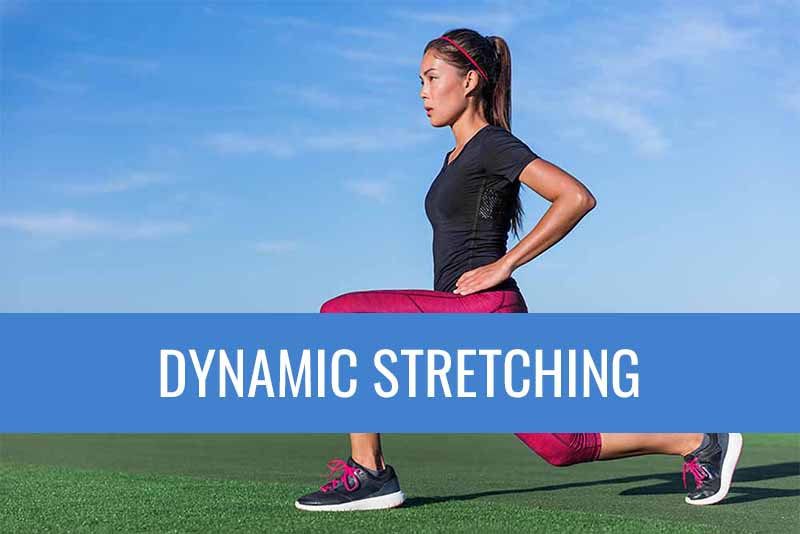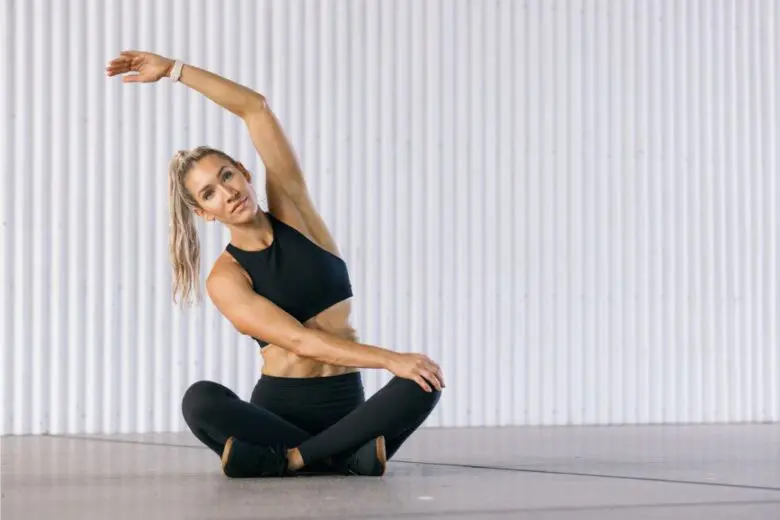With its emphasis on warming up the body and preparing the muscles for the challenges ahead, dynamic stretching has become a mainstay of any workout regimen’s preparation phase. Stretching like this improves performance, lowers the chance of injury, and gets the body ready to take on any physical activity head-on. It’s not just about being flexible. Comprehending the nuances is essential for optimizing your workout regimen, regardless of your level of experience as an athlete or your level of fitness.
The Essence of Dynamic Stretching

Active actions that allow muscles and joints to fully extend their range of motion are known as dynamic stretching. Unlike static stretching, which is retaining a position for a certain amount of time, this sort of stretching is done while moving, meaning the body is in motion the entire time.
This warming-up process gradually increases the heart rate and circulation, which, in turn, increases the temperature of the muscles, making them more pliable and less prone to injuries. It’s a way to signal to your body that it’s time to move, transitioning smoothly from a state of rest to a state of physical activity.
To reap the maximum benefits, it should be tailored to the workout ahead. For instance, if you’re planning a run, leg swings, and walking lunges are particularly beneficial. The key is to focus on movements that mimic the exercise you’re about to perform. It’s also essential to start slowly and gradually increase the range of motion to avoid overstretching or causing strain.
Implementing Dynamic Stretching in Your Routine

Incorporating it into your pre-workout routine doesn’t have to be complex or time-consuming. With a few simple exercises, you can effectively prepare your body for the demands of your workout, whether it’s a high-intensity interval training session or a long-distance run.
The effectiveness lies in its specificity. By choosing stretches that closely mimic the movements of your upcoming activity, you create a functional bridge between rest and exercise. This not only improves your performance but also minimizes the risk of injury by gradually acclimating your muscles and joints to the types of movements they will perform.
A comprehensive routine, which might include arm circles, leg swings, lunges with a twist, high knees, and butt kicks, is significantly enhanced when tools like the “Castle Flexx” are utilized. This innovative stretching aid, found at Castle Flexx, is designed to support a deeper, more effective stretch, ensuring that you’re moving through the full range of motion and gradually increasing your speed and intensity.
Understanding the Science Behind
Research shows that dynamic stretching can enhance muscle power, flexibility, and endurance, making it an integral part of an athlete’s warm-up routine. It affects the body on a physiological level by increasing blood flow to the muscles, elevating muscle temperature, and improving the elasticity of the muscle fibers. These changes are crucial for enhancing muscle performance and range of motion while reducing stiffness. Such physiological adjustments ensure that the body is more equipped to handle the stresses of physical activities, thereby enhancing overall performance.
While this is favored as a warm-up technique, it’s often contrasted with static stretching, traditionally recommended for cooling down. Static stretching involves holding a stretch for a long duration, which can lead to decreased muscle strength and performance if performed before exercise. This distinction underscores the importance of choosing the right type of stretching based on the timing and goals of your workout routine.
Maximizing Benefits: When to Integrate Dynamic Stretching

Timing is everything when it comes to stretching. With its emphasis on movement and activity, it is best performed before workouts to prepare the body for physical exertion.
To maximize the benefits, it should be performed after a general warm-up, such as light jogging or cycling. This ensures that the muscles are already somewhat warm and more receptive to stretching, thereby enhancing the efficacy of the dynamic stretches and further reducing the risk of injury.
Integrating these stretches into breaks throughout your day can help maintain muscle flexibility, reduce stiffness from prolonged sitting, and improve circulation. This practice is especially beneficial for individuals with sedentary lifestyles or those who spend many hours at a desk.
Addressing Common Myths
Despite its benefits, there are several misconceptions surrounding it that can deter individuals from incorporating it into their fitness routine.
Myth: Dynamic Stretching is Only for Athletes
One common myth is that dynamic stretching is solely beneficial for athletes. However, it is advantageous for anyone looking to increase their physical activity level, improve flexibility, or simply warm up their muscles before starting their day. It’s a versatile technique that enhances overall movement efficiency, regardless of fitness level.
Myth: Dynamic Stretching Can Replace a Full Workout
Another misconception is that it can serve as a replacement for a full workout. While this is an effective way to warm up, it should complement, not replace, a balanced exercise routine that includes cardiovascular, strength, and flexibility training. It prepares the body for exercise, but it does not substitute the comprehensive benefits of a complete workout.
Customizing for Different Sports

The versatility allows it to be tailored to suit the specific demands of various sports, enhancing athletic performance and reducing the risk of sport-specific injuries.
For Runners
Runners can benefit from dynamic stretches that mimic running motion, such as high knees, butt kicks, and walking lunges. These exercises improve leg flexibility and strength, critical for efficient and safe running.
For Swimmers
Swimmers might focus on dynamic stretches that target the shoulders, chest, and back, such as arm circles and shoulder shrugs. These movements help prepare the upper body for the extensive range of motion required in swimming, reducing the likelihood of shoulder injuries.
Conclusion
A valuable tool in any athlete’s toolbox, dynamic stretching provides an efficient and successful way to prime the body for exercise. You can improve your performance and lower your risk of injury by including dynamic stretches tailored to your workout routine. Recall that it aims to move as well as stretch. You will experience increases in your flexibility, strength, and general physical preparedness for any obstacle your workout may bring as you integrate these techniques into your regimen.

